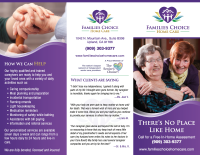Moving into assisted living communities is a major step for most elderly parents, especially since they will be living in their new residence for an average of 2 1/2 years.
To make them feel confident in their decision, it is important to make the move a joyous occasion. The last thing they need is to think they are downgrading or giving up.
The best way to do this is to help them with the transition both in preparing their old home, moving, and getting settled in their new place.
Use these seven tips to make it a smooth move by supporting your loved one through the entire process.
1. Start Preparing as Soon as Possible
As soon as possible, start making a checklist for moving elderly parents into an assisted community.
Most elderly have lived in the same home for decades, so they may not be accustomed to moving. They also have accumulated many possessions. It will take some time to change addresses, downsize furniture, and pack boxes.
You also don’t want to wait until the last minute and shock your parents with the move. Making small changes little by little will help them accept the transition.
2. Figure out How Much Downsizing Is Needed
Your checklist for seniors downsizing should consider how big your loved one’s apartment or room will be in the assisted living community.
Ask for the square footage and floor plan to start thinking about space issues.
You may need to suggest new furniture or choose certain pieces that will fit comfortably in their new home. Make it easier to imagine the new arrangement by visiting the apartment and taking measurements.
But, make sure that your parent makes all the decisions, including which furniture to keep, new ones to buy, and how to arrange them. Do not try to take over and assume your loved one needs help deciding what to keep and toss.
3. Identify Prized Possessions
Most small possessions will not fit in the new place as well.
Before searching through everything, ask your loved one to identify possessions that cannot be replaced or discarded.
If some of their cherished possessions don’t fit in their new place, then ask if they would like to pass them on to the next generation. They can find joy in giving away memorable items as gifts to their children and grandchildren.
They can move the items that fit into their new home to begin making it comfortable. Make this process fun rather than depressing by involving the family.
4. Hold a Yard Sale and Gather Items for Donation
Once the most important items find a new home, the next task on the assisted living checklist is to go through all the unwanted or unnecessary items.
Organize which possessions are in the condition to sell at a yard sale.
Choose which ones aren’t worth selling but are in decent condition to donate.
Then get trash bags for things that no one can use.
A yard sale should also be joyous. Stay positive and tell your parents that someone else will get to enjoy these items again.
5. Gradually Move Items Not in Use
How can you get parents into assisted living without disrupting their lives?
The best way to move is to start with the things that aren’t used daily. There may be rooms that act only as guest rooms or kitchen utensils for special occasions.
You can start packing and moving these things to the new place so that you don’t have to do one big move. This can make moving day less stressful.
Unpacking these items slowly will also get your parents used to the new place before they start living there permanently. They can start organizing and decorating, which will make the move more exciting.
6. Start Enjoying the Community
Unlike a nursing home, the transition to assisted living can be seen as a new adventure since many residents are still independent and active.
They include a dining hall, shuttle bus trips, and community events.
To get your loved one excited and prepared for the move, suggest for them to start attending some of the activities. They can meet their neighbors, see what is on the menu at the local restaurant, and join in on a game of bingo.
Assisted living communities make independent living for seniors extremely easy by offering assistance as well as entertainment.
They are packed with activities that keep residents busy while improving their memory and preventing cognitive deterioration.
7. Have the Family Visit
Once your loved one makes the move into their new home, it’s important to make them feel loved and secure.
Family visits show them support while making them less lonely.
Family can also be invited to the community restaurant and attend events. Some communities even hold family-oriented activities.
Your parents will enjoy showing off their new home and neighborhood. They should be proud that they are still independent.
Life After Moving into Assisted Living
Now that moving into assisted living in finished, as an adult child of a senior, you should visit them often. This will make them know that they are still part of the family and in your thoughts.
You can also assess their needs further. Not all assisted living communities have one-on-one help for your parents. They may be in need of additional medical care or assistance with daily tasks.
If you think your parents would benefit from a caregiver in their new home, contact us for an assessment of their needs.






